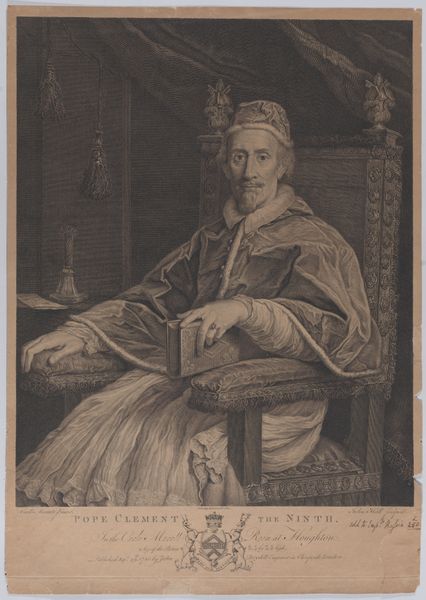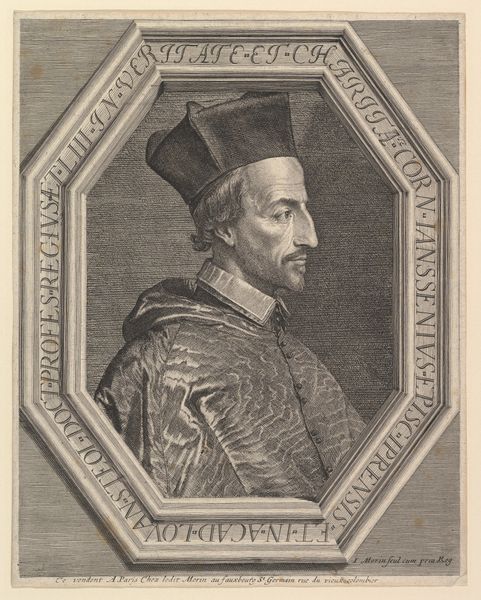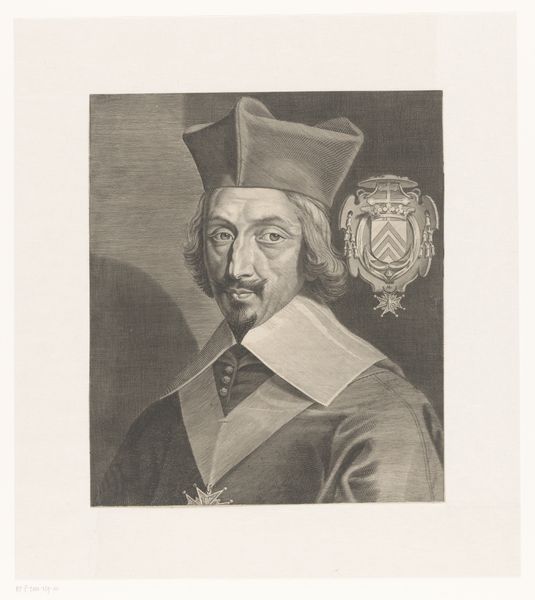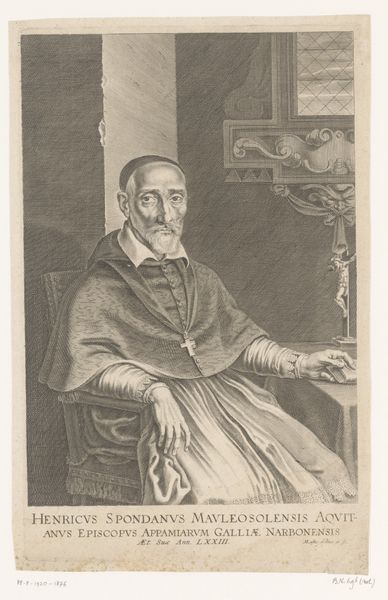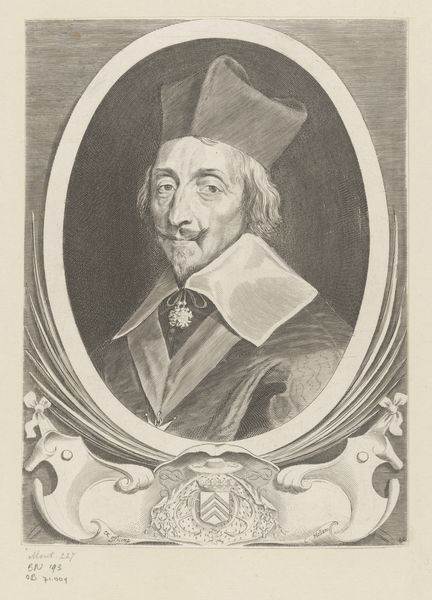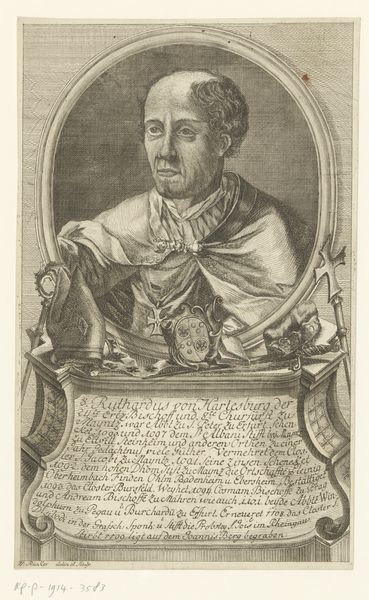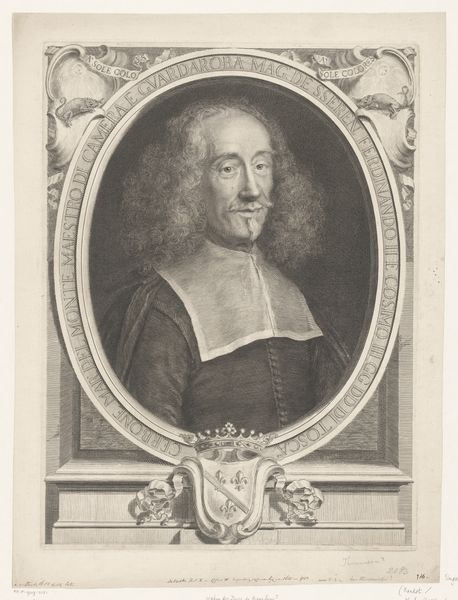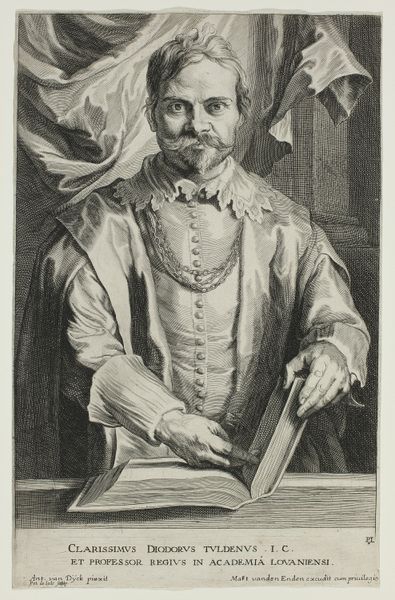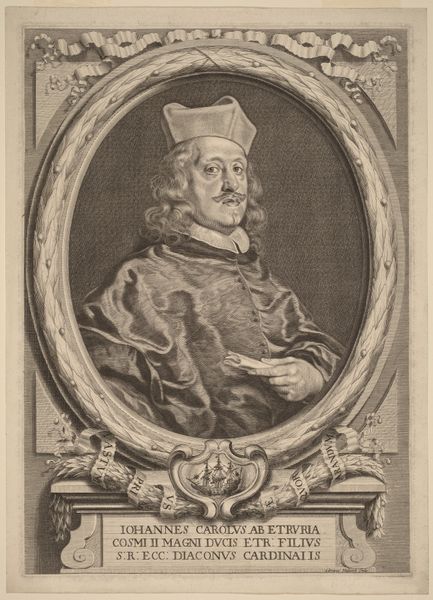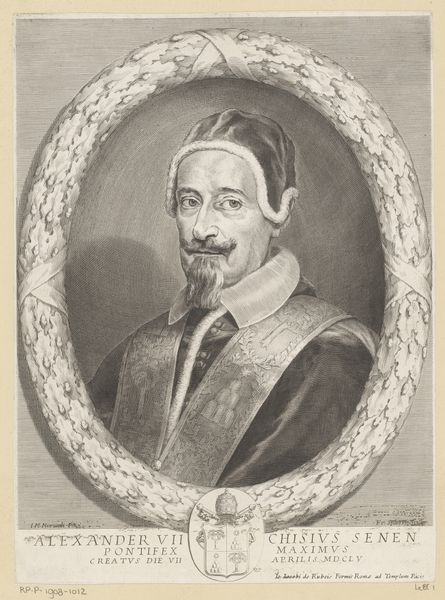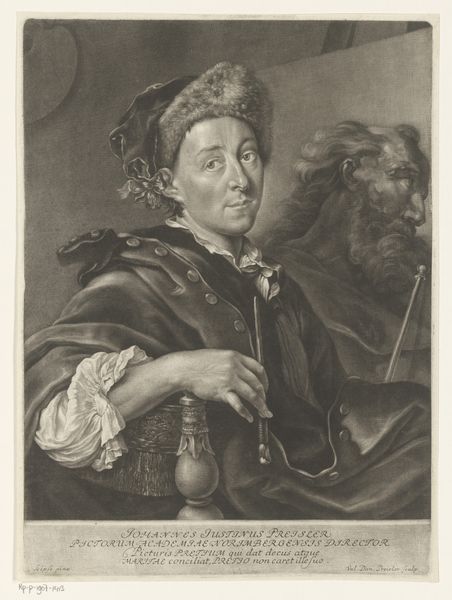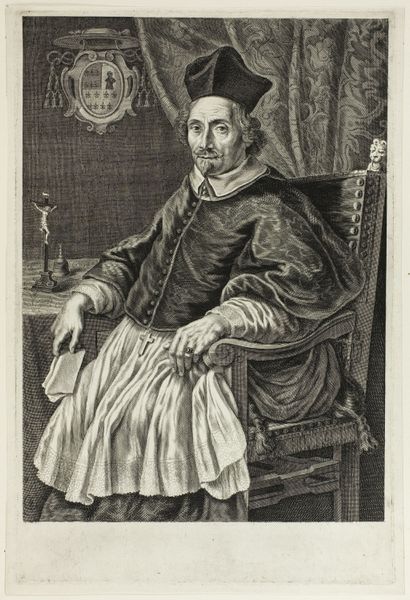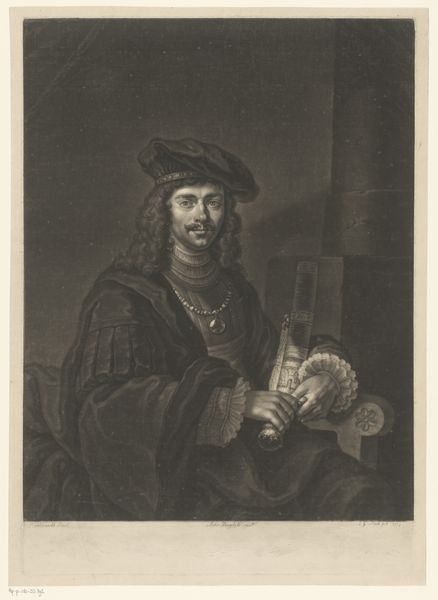
drawing, print, paper, engraving
#
portrait
#
pencil drawn
#
drawing
#
baroque
# print
#
figuration
#
paper
#
pencil drawing
#
line
#
portrait drawing
#
history-painting
#
engraving
#
realism
Dimensions: height 348 mm, width 252 mm
Copyright: Rijks Museum: Open Domain
Curator: This print from 1735, entitled "Portret van Eucharius Gottlieb Rink," really strikes me. Look at the way identity is constructed through visual markers of status. Editor: My initial impression is dominated by the engraving’s remarkable detail—it looks like velvet, but printed on paper. I wonder about the tools used and the sheer labor involved. Curator: Absolutely. This portrait presents Rink, a primary professor at the University of Altdorf, within the conventions of Baroque portraiture, yet it's engaging with the humanist ideal of scholarship through the inclusion of books and a classical statue. The layers here point to larger ideas of knowledge, influence, and belonging. Editor: Notice how the light renders the textures of his robe and hat; the rendering of his face, achieved using lines of different weights and proximity is impressive. Consider the time it must have taken the engraver, presumably working under close direction from Rink himself. Curator: Considering the historical context, printed portraits were key to disseminating images of influential figures, cementing their legacy within the intellectual sphere. And thinking about visual hierarchies, Rink’s placement relative to the statue tells a subtle story of cultural ambition. Editor: The paper support is important to remember here, this choice speaks to wider production and use, it could have circulated amongst an elite scholarly society perhaps? I am very intrigued by the print making techniques that create an expensive look. Curator: His gaze also communicates authority but I find it intriguing to think how people during the Enlightenment might have used it to construct their self-image and reinforce the power structures of academia. Who had access to images such as this? Editor: Ultimately the material and methods used give us access to understanding broader economic systems. Curator: I appreciate how you spotlight the physicality and materiality inherent in this piece. Considering social and political forces helps us unlock deeper insights into art's purpose. Editor: And seeing your perspective lets me reconsider the artwork's intended audience and social implications during the Enlightenment era.
Comments
No comments
Be the first to comment and join the conversation on the ultimate creative platform.
